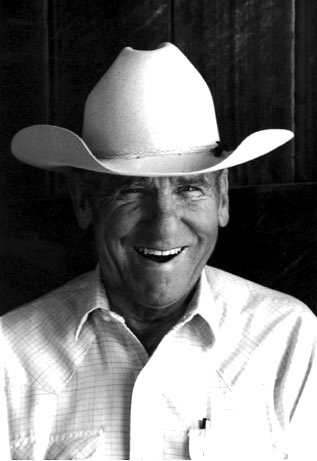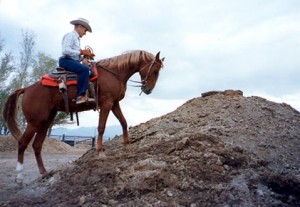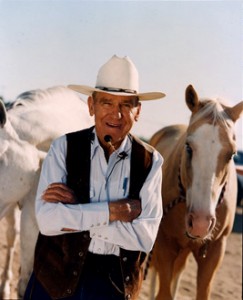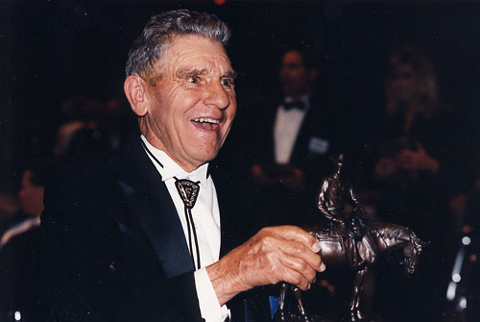
Tom Dorrance, along with Ray Hunt, are considered the founders of the Natural Horsemanship movement, although they didn’t realize it at the time. To them it was just common sense.
Tom was born in 1910 and died in 2003 at age 93. He was married to Margaret Dorrance.
Tom had an incredible ability to look at the horse and completely understand what it was feeling and doing. There weren’t any tricks or steps, he had the ability to organically relate. Opening that door and realizing how to look at things from the horse’s perspective fundamentally changed the horse industry.
 Writer Linda Boston Franke said it best in her article Timeless Teachings of a Master Horseman on the RanchandCountry.com website:
Writer Linda Boston Franke said it best in her article Timeless Teachings of a Master Horseman on the RanchandCountry.com website:
“Tom encourages the rider to arrange things so that, when the horse is going the way the rider wants him to, there’s no resistance, and no pressure. If the horse is going any other way, the rider makes it difficult; i.e., the horse runs into resistance or pressure. But — and this is one of the big keys — the rider, in making it difficult, makes it so that the horse comes up against his own pressure, not pressure from the rider. In other words, the rider doesn’t force or make the horse to do something; he lets the horse discover that doing that something is his best choice.
“Tom explains that letting a horse come up on his own pressure is a language a horse can understand because it matches what the horse experiences in a natural setting of herd life. When horses fight to establish dominance in a herd situation, neither sets out wanting to get hurt. Each figures on the other one yielding. So the first horse applies pressure, thinking the second horse will yield. But when the second horse doesn’t yield, the first horse comes up against his own pressure that he’s applying.
“Letting the horse come into his own pressure is foundational to these teachings. It’s not about punishing the horse or disciplining the horse. If a person looks at the horse and rider from the outside, he might not see the difference. But there is a big difference going on mentally inside the rider, and inside the horse! The horse is coming into his own pressure, and there he makes a choice to yield. The rider is speaking to the horse in the horse’s own language, paralleling the horse’s experiences in the horse world, and the results are that the horse has respect, and responds.
“When respect is present, only a whisper of pressure is required for the horse to yield, because the horse is clear about yielding. He respects what is taking place. He’s in cooperation with it. So the bottom line is, when you get the respect, you get the response. For the rider to be effective in applying these teachings, and putting pressure on in such a way that the horse experiences it as running into his own pressure, there are certain requirements. The rider has to have an elusive quality that Tom calls feel. Also, the rider has to have timing. Feel has to come from inside the person. Tom says direction, support and encouragement may help, but there’s no way to get feel from the outside.”
 And from Tom’s website:
And from Tom’s website:
“The part that has meant the most to the horse and me is the communication between us. This is the part where I really had to devote a lot of thought. I have watched horses when they are loose by themselves or loose in a group; gentle raised or wild range raised, their naturalness will show. And by studying their actions and reactions I have been helped to understand how to present myself in such a way that the horses will respond to what I may ask of them. This I believe is true nature.
“This is something I have had to develop in myself, for myself, by myself. The True Unity and Willing Communication between the horse and me is not something that can be handed to someone, it has to be learned, it has to come from the inside of a person and inside of the horse.
“I try to feel what the horse is feeling and operate from where the horse is.
“Tom has been referred to as the “horse’s lawyer”. He gives the horse credit for his knowledge of a horse’s feelings and problems.
He says, “What I know about the horse I learned from the horse.”
You can get more information at his website by clicking HERE. There are several DVDs and books by and about him – definitely worth watching.
If you have problems seeing the video below click HERE
.youtube::YsH-xVGMgsE::

